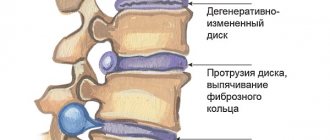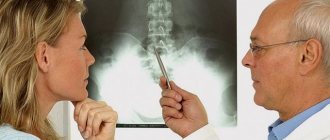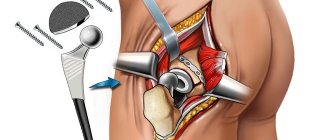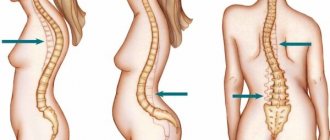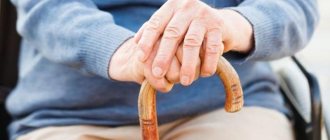Osteoporosis is a serious disease characterized by a decrease in skeletal bone density and a high risk of fractures, even after minor injuries. At the initial stages of development, the pathology practically does not manifest itself at all and it is impossible to identify it in a timely manner in order to stop its further progression. And in the final stages of development, osteoporosis cannot be treated, which is why people are forced to radically change their lifestyle, giving up active recreation and various types of overload. So is there any disability for osteoporosis? And what is required to complete it?
What is osteoporosis
Osteoporosis is a disease of bone tissue that leads to changes in the structure of bones and a decrease in bone mass: bones lose the minerals necessary for the body and, because of this, become porous, becoming like a honeycomb. This pathology leads to brittle bones, their destruction, fractures of the vertebrae, wrists and femurs. Lesions of the spine are especially dangerous - their consequence is disability due to osteoporosis.
The progressive disease can cause spinal deformities and fractures of other bones, not only from heavy lifting, but even from sudden movements, sneezing or coughing.
According to statistics, about 20% of men and almost half of women over the age of 50 suffer from osteoporosis of varying severity.
Degrees
There are 3 degrees at which a person can become disabled.
- The patient completely lost the ability to work. Complications of the disease are so serious that they pose a risk to the patient’s life . Due to severe pathological processes in the spinal column and legs, the person is completely immobilized. There are cases when a person begins to perceive external stimuli inadequately. At this stage of the disease, the patient stops caring for himself and performing simple manipulations due to pain and immobility.
- The patient may become disabled if any bone is broken. And also if complications are identified in the functioning of the heart muscle, if pathological changes have occurred in the respiratory system. To obtain a degree of disability, it is important to prove through diagnostic procedures that disruptions in the body are directly related to the development of pathological changes in the skeletal system .
- A person can be given a disability if he has severe, unbearable pain , which leads to a decrease in the quality of life and negatively affects performance. It is also possible to obtain disability if the diagnosis reveals severe damage to the joints, spine or all bone tissue . Disability status can also be given when diagnosing kyphososcoliosis.
Signs of osteoporosis
In the early stages, the disease is asymptomatic. However, the gradual weakening of the bones leads to the appearance of signs characteristic of osteoporosis:
- feeling of pain in the back;
- human height decreases;
- stoop appears;
- bone fractures under minor loads.
These symptoms appear due to destruction of the vertebra.
The likelihood of osteoporosis may be indicated by early menopause, a femur fracture in old age, or thyroid disease.
A person becomes disabled due to osteoporosis of bones due to a pronounced syndrome of the disease.
Indications for testing
In order to receive an appointment for a disability examination, the patient must be registered with the attending physician for a long time and receive medical care. Indications for measures include:
- Regular and prolonged exacerbations of the disease, in which ordinary rehabilitation measures do not help.
- Rapid progression of pathology with painful attacks and loss of performance.
- Incapacity for a long period of time due to severe illness.
- Frequent headaches and disorders of the vestibular system, which cause loss of ability to work.
- Doctors' contraindications to work.
- Severe pain syndrome, respiratory dysfunction, neurological disorders and cauda equina syndrome.
Risk group
The degree of susceptibility to osteoporosis is determined by the mass of bone tissue that a person has accumulated by the age of 20 years, while living cells predominated in it. Active growth of living cells occurs precisely in youth, during the period of bone growth, so it is important to promptly create the necessary “reserve” of minerals to prevent the disease in the future.
A number of factors also increase the risk of osteoporosis:
- genetic factor - the disease can be inherited;
- gender – women are affected by the disease 2.5 times more often than men;
- age factor - the older the person, the greater the likelihood of getting sick;
- metabolic disorders;
- physical inactivity;
- small skeletal mass;
- bad habits (drinking alcohol, smoking).
In addition, the risk of the disease is created by long-term steroid and corticosteroid therapy, leading to abnormalities at the hormonal level.
Features of the disease
A person with osteoporosis cannot lead a full, active life. Discomfort and severe pain do not allow you to perform physical work, move actively, or lead a normal lifestyle.
While osteoporosis is at an early stage, it does not make itself felt by any symptoms. The danger of the problem is that the disease is characterized by a long course, up to decades. There is a slow thinning of bone tissue, which becomes fragile and brittle.
Irreversible processes begin, leading over time to complete immobilization. Bone density decreases and their mass decreases. The spine becomes deformed at the slightest physical exertion. As the disease progresses, there is complete limitation in movement, and the reaction to any external stimuli disappears.
The main danger for the patient is a fracture of the femoral neck. The person becomes completely incapacitated and bedridden for life. This often leads to death due to complications such as bedsores, sepsis or the development of congestive pneumonia.
Do osteoporosis provide disability?
For osteoporosis, a disability group is given for severe, progressive disease. A person can receive a certain disability group, depending on the degree of disability: the medical verdict is determined by checking the medical history, the stage of osteoporosis and the severity of the patient’s condition.
Severity
I degree of disability is assigned to a patient who has significant deviations in the functioning of the musculoskeletal system (scoliosis - spinal deformity) and severe pain. The condition of such a patient is critical: it is characterized by loss of working capacity and the inability to self-care at home. In this case, the disease is most dangerous: it threatens life.
The patient receives degree II in case of multiple fractures of different bones, in case of disruption of the functioning of vital organs (heart and lungs) due to the progression of the disease.
The third degree of disability is determined by characteristic pain against the background of obvious signs of kyphoscoliosis (complex curvature of the spine in the lateral and anteroposterior directions).
Design rules
The basis for confirming the incapacity for work and registering the disability of patients is the passage of a special medical commission.
This medical advisory commission is authorized to give an opinion on disability due to osteoporosis of the spine after the patient has undergone a number of diagnostic procedures and fulfilled the necessary conditions. Doctors conduct a comprehensive examination of the patient, which results in an assessment of the severity of the condition.
When assigning a degree of disability, commission members are guided by regulatory documentation. Having reviewed and studied the required package of documents, MSEC makes a decision, which is sent by letter to the patient’s place of registration. The patient receives a certificate of disability and an individual rehabilitation program.
After a certain period of time has passed after the assignment of one or another disability group, the examination results are re-checked - the patient undergoes a similar examination again.
Who gives the right to receive social benefits? What are the conditions?
The degree of loss of working capacity and the criteria for assigning disability groups are carried out by a medical and social examination. ITU is guided by a number of criteria.
Table. Basic conditions for obtaining a group due to the patient’s disability.
| Degrees | Criteria |
| 1 | The first group for osteoporosis is given to patients with one or more categories of limitation. These include independent maintenance, the ability to learn, work and orientation, and the ability to move independently. |
| 2 | Group 2 disability is determined in case of severe pain, bone fractures, and functional disorders. Criteria for establishing the second degree: injury, congenital defect, minimal ability for self-care, the patient’s need for constant outside supervision, care or assistance. |
| 3 | The patient is given group 3, if it is impossible to move independently or take care of himself. This group for osteoporosis is given if the patient is not able to control his behavior, has poor spatial orientation, and has limited work activity. |
Assignment of a group is carried out after receiving the results of the analysis, collecting anamnesis for patients, and conducting a comprehensive diagnostic examination of all systems and organs of the patient.
Complications of osteoporosis
The most serious complications of osteoporosis include bone fractures, most often of the vertebrae or hip. Vertebral fractures with this disease can occur even without a fall. The consequence of a vertebral fracture is their deformation and disruption of the functioning of the damaged element of the spinal column. Displacement of a vertebra can result in compression of the spinal cord and lead to neurological pathologies.
Also, the course of osteoporosis can be fraught with complications in the form of poor posture.
In such cases, treatment is carried out - conservative (wearing a corset) or surgical (implantation of fixing metal structures).
Treatment
Treatment of osteoporosis occurs in several directions. This includes standard medication therapy, lifestyle changes, and the use of exercise therapy, physiotherapy, etc. As a rule, doctors will recommend methods depending on the stage of development of the disease.
Treatment of osteoporosis
Lifestyle change
This is perhaps one of the most important aspects of successful treatment. A patient with osteoporosis must follow a special diet, give up bad habits and exercise within reasonable limits.
Exercises for Osteoporosis
The basis of the diet is foods rich in microelements and especially calcium. This includes cottage cheese, cheese, other dairy products, sea fish as a source of vitamin D, and grain bread.
If the patient’s weight is too high, then it must be reduced through the same diet - limit the consumption of sweets, fatty foods, and carbonated drinks. Sports will also help you lose weight - the main thing is that the loads are gentle and do not lead to compression fractures. The best options are swimming, cycling, walking. Sports that can lead to fractures will have to be excluded from life.
Calcium rich foods
Medicines
Medications are used primarily to relieve pain - these are analgesics and NSAIDs. Doctors may also recommend ointments and gels as topical agents. Can be assigned:
- calcitonin is a hormone that activates the processes of calcium absorption, in addition to this property it is an analgesic;
- bisphosphonates – will slow down the processes of bone tissue destruction and improve regeneration;
- hormones - replacement therapy will slow down the progression of the disease in women;
- vitamins are necessary if the diet is poor and not rich in useful elements.
Treatment with medications
The procedure for establishing and registering disability
Persons of any age who are subject to a disability category must provide a package of medical documents and a referral for examination from a medical institution from the leading doctor who provided treatment. You can also get a referral from the social security authorities, and pensioners can apply for disability registration from the Pension Fund.
The collected documents to be reviewed must be submitted to the ITU Regional Office at your place of residence. Within a month, the commission considers the grounds for establishing disability, after which it announces a decision. If you disagree with the adopted verdict, the person has the right to contact the ITU Main Bureau, which will schedule a re-examination of the documents. The next stage of appeal is the court.
We suggest you read: Massage for osteoporosis: can it be done if the spine, shoulder joint, or hip bones are affected?
A child under 18 years of age with significant disabilities must provide a children's outpatient card to the ITU office to establish the category of “disabled child.” If a person applied at an older age, and the diagnosis was established before adulthood, then the person falls under the category of “childhood disabled.”
Symptoms
The disease is quite difficult to identify at the initial stage, since during this period patients rarely seek help due to the almost complete absence of symptoms. However, knowing the main signs that appear at each of the three stages, there is a chance to notice in time the onset of pathological symptoms.
How does osteoporosis manifest?
Table. Signs of osteoporosis depending on the stage of the disease.
| I | This is the mildest form of the disease, in which the symptoms are quite scarce. Bone deformation is moderate. Main symptoms: · slight pain in the lumbar region, which manifests itself after prolonged standing or sitting in one place; · slight decrease in vertebral density; · limb cramps, which are most often observed at night; Weakness in the lumbar region; · the first signs of a decrease in the amount of calcium in the tissues of the body - the condition of the teeth is deteriorating, hair is brittle, etc.; · minor difficulties when trying to pick up a fallen object from the floor or when tying shoelaces. |
| II | At this stage, degenerative processes in the bones begin to occur faster. Moderate deformation of bone tissue. Signs: · the appearance of pain in the spine, which is episodic or constant. Moreover, the pain syndrome intensifies when a person performs ordinary household activities. Changes in weather conditions can also cause increased pain; · feeling of discomfort and pain in the hip joint or sides; · pressure fluctuations; · tingling and numbness in the legs. |
| III | At this stage, osteoporosis can no longer be confused with anything; it is a severe form of bone deformation, and the symptoms characteristic of the disease are: · constant severe pain in the lumbar and back areas; · when touching the affected area, the pain intensifies; · special folds characteristic of the disease appear on the sides; · hair falls out, nails quickly break; · pain is felt in the hip and other large joints; Compression fractures may occur, resulting in pinching of the spinal cord nerve roots. |
Abdominal protrusion
Also, the development of osteoporosis can be noticed by severe changes in posture, decreased height, and the presence of chest pain. By the way, changes in height can sometimes be very significant - there is evidence when a person became 10-15 cm shorter (albeit as a result of compression fractures). Due to the shortening of the chest, the arms may appear too long.
Changes in bone structure in osteoporosis
